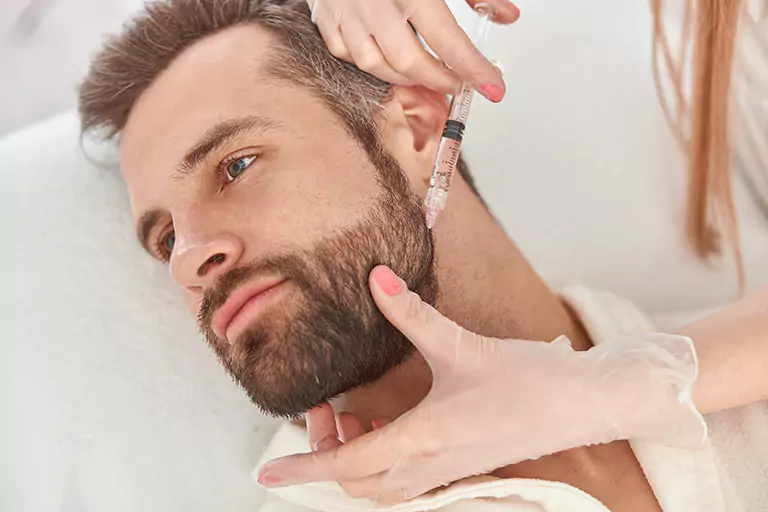Beard Transplantation
Beards may not grow in some parts of the beard area of men's faces for various reasons. This creates negative effects for the person as it causes deformity. Beard transplantation is an application that gives a definite solution in such cases. With this planting, the problem is eliminated with the applications made in the areas where the beard does not grow or where the beard is sparse.
How is Beard Transplantation Performed?
First of all, hair follicles are taken from the donor area of the neck.
These roots are applied to the areas where there is no hair and a natural beard appearance is obtained.
Since the grafts are taken with care in the application, there are no traces or symptoms in the area taken. If there is beard loss locally, the number of roots is determined in accordance with the frequency of the remaining region and the application is made. If there is no beard on the face of the person, the number of roots is determined according to the desired frequency and the application is made. In cases where the beard is not completely, 1000 to 3000 roots are needed on average.

Before Beard Transplantation
There may be beard sparseness on the human face, and the beard may not grow due to wounds or burns on the face. Such problems lead to beard transplantation. Beard cultivation starts from the age range of 20 to 22, when hormones settle. Sideburn transplant and eyebrow transplant are similar to this transplant, and it is a method frequently used by those with irregular hair and missing hair.
Beard transplantation is not like hair transplantation; because there are different densities of beards from person to person. If there is a loss, then the beard density in the vicinity is planned and harmonized with the surrounding hairs. If the patient is completely beardless, i.e. corner, it varies between 1500 and 3000 root transplantation according to the desired density.
After Beard Transplantation
After the procedure is completed, the area where the beard transplant is made is seen as red due to clotted blood. With the cleaning done after 24 or 48 hours, the beards begin to appear as the coagulated will be removed. Since the body will feed the transplanted beard roots, blood clots occur in the transplanted area. These bleedings disappear within 1-2 weeks. During this period, acne can be seen in the planting area, this is normal.
The age range of men performing beard transplants will not be fixed. Modern beard transplantation is performed in the area where local anesthesia will be applied. Thus, the treated person does not feel pain during the transplant. The purpose of most men in our country to have a beard transplanted is the social pressure on men who do not have beards, and the bearded men's trend that has attracted more attention of women lately and has made men stand out.
The method, which is similar to hair transplantation, is currently performed with a different price than hair transplantation. The reason is that beard roots are made with a tighter working area than hair roots.
In fact, this method is referred to as the facial hair transplant method; because it is not a beard, but rather a hair-like hair transplant. These new beards take on the thick and hardened bristle structure over time. Of course, regular and careful shaving strengthens the roots after beard transplantation and provides hardening in the form of hair.
Calculating Root Number
350 to 500 roots for a mustache in an average person,
600 to 700 roots for a full goatee,
200 to 250 roots for sideburns and 300 to 700 roots for cheek beard,
Although it can be said that the transplant should be performed, this situation always varies
from patient to patient. You can contact us for beard transplant prices.
